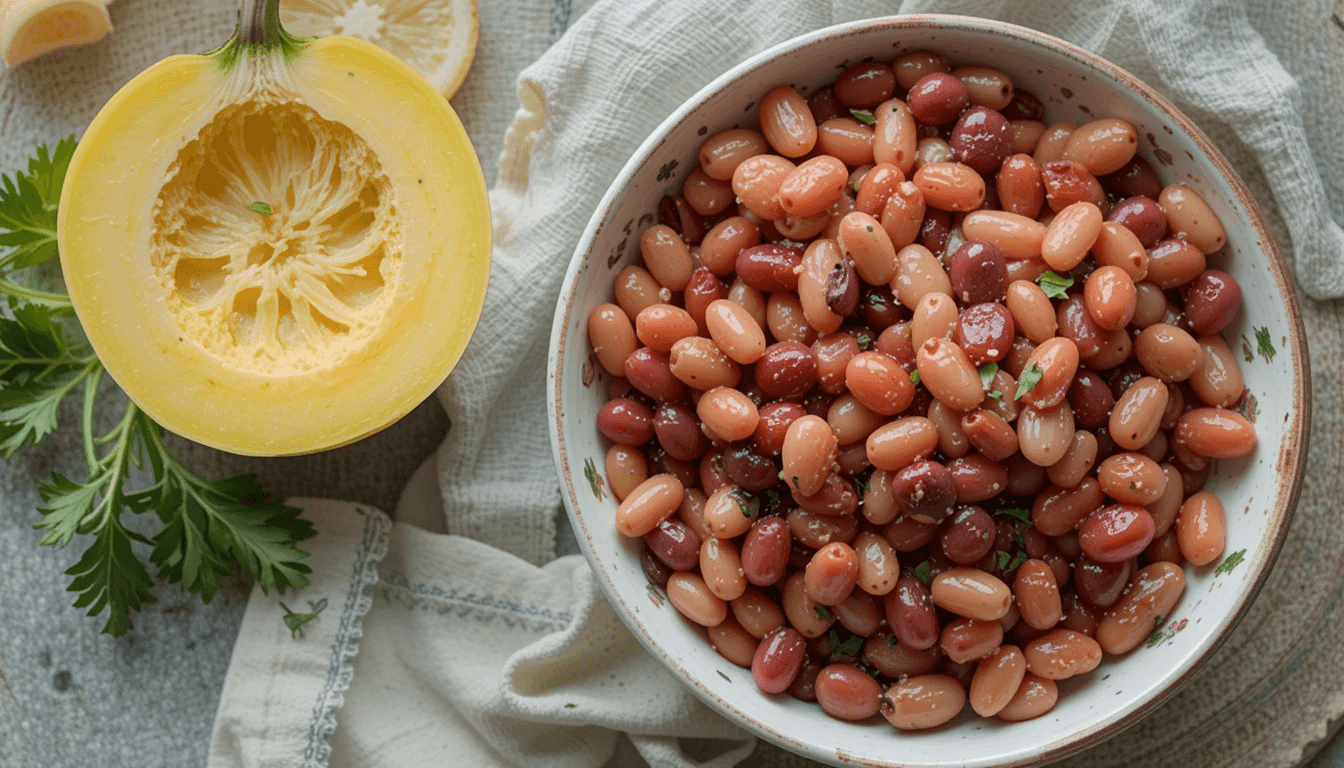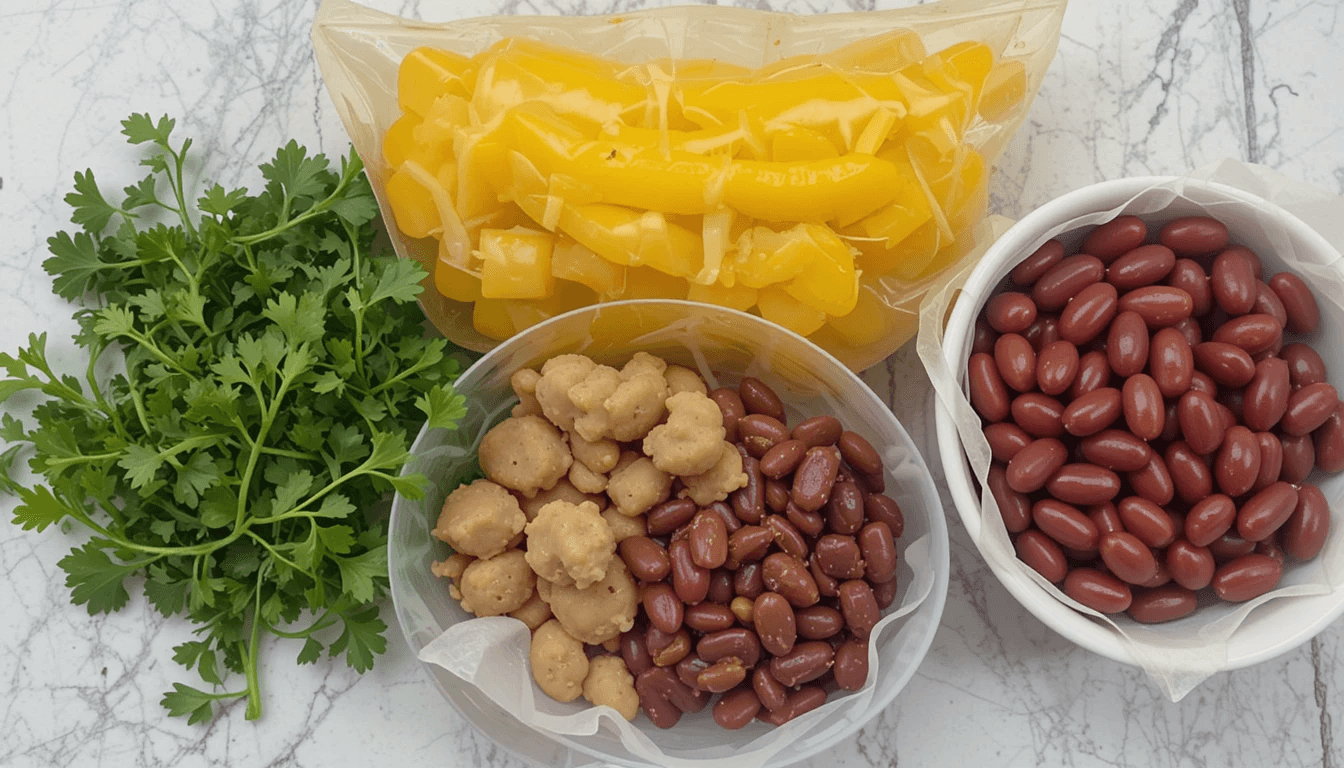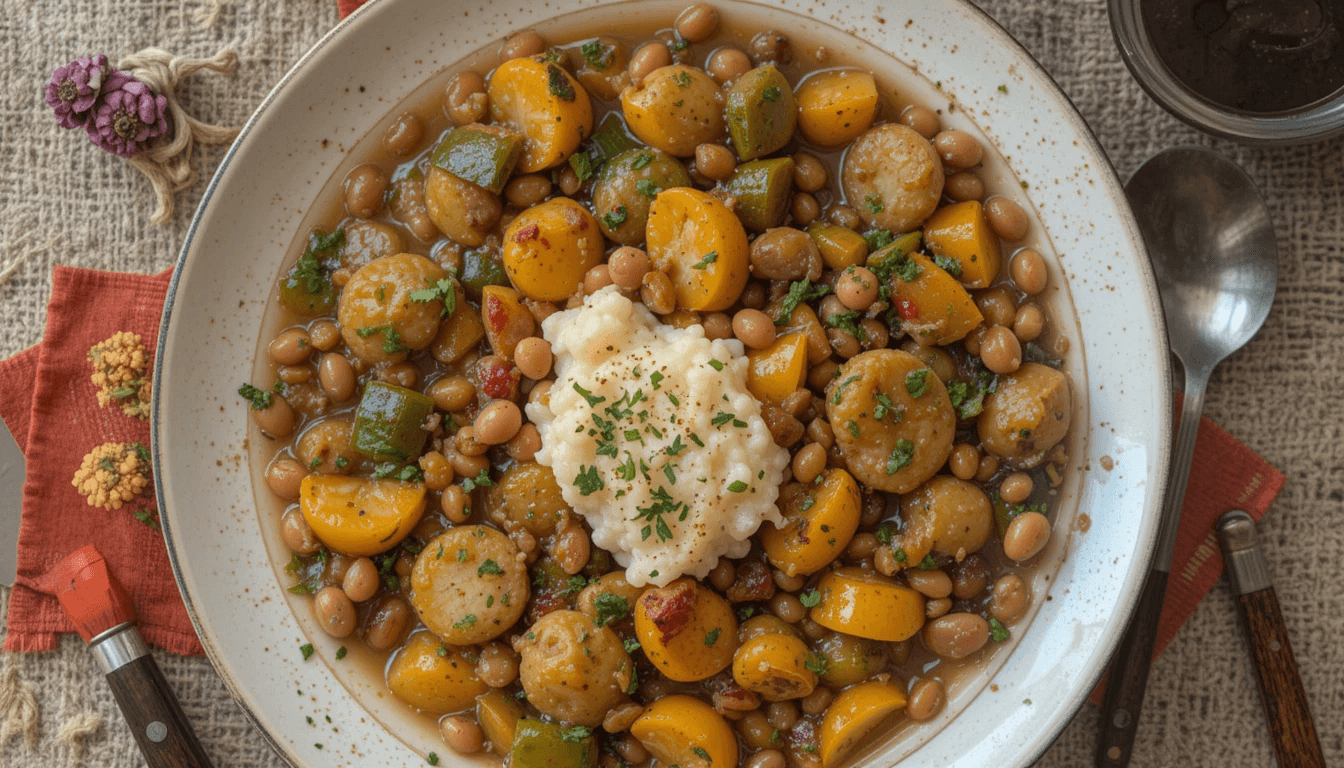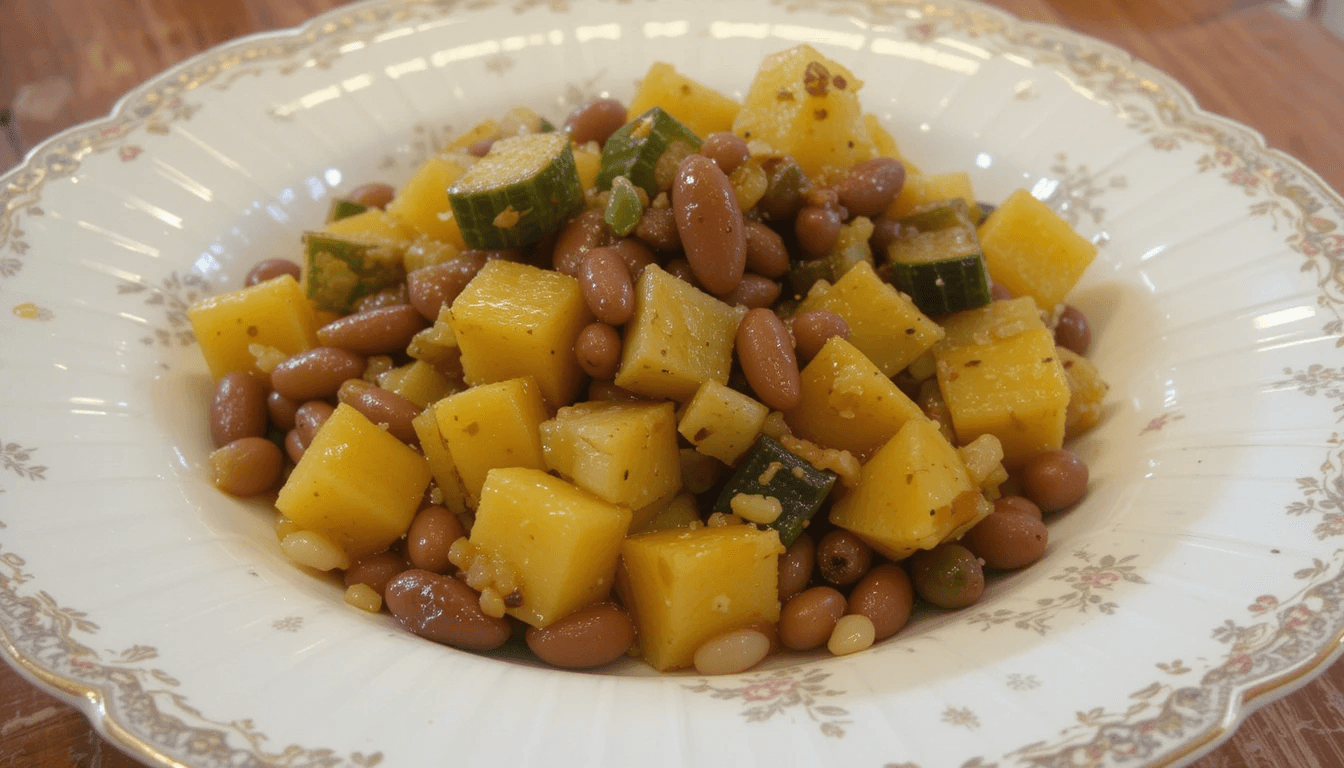Recipe Squash and Kidney Beans: A Tasty Twist for a Balanced Diet is a hearty dish that combines creamy squash and protein-rich kidney beans. This recipe squash and kidney beans meal offers vibrant flavors, satisfying textures, and plenty of nutrients to keep you energized. If you’re ready to explore a new, colorful culinary journey, this dish may be just what you need.
Introduction
Have you ever opened your pantry, stared at a can of kidney beans, glanced at a lonely squash on the counter, and wondered how to transform those ingredients into a mouthwatering meal? If so, you’re in the right place! Our recipe squash and kidney beans adventure taps into rich flavors, wholesome goodness, and a satisfying sense of accomplishment when you serve up a warm, hearty dish.
There’s something magical about blending the sweetness of squash with the robust taste of kidney beans, creating a meal that’s as comforting as your favorite blanket on a chilly day.
Even if you’re not a seasoned chef, you can still prepare recipe squash and kidney beans in a way that dazzles your taste buds.
With just a few steps, you’ll discover how these humble ingredients can combine to deliver a truly memorable dining experience.
From picking the right type of squash to ensuring your kidney beans are cooked to perfection, we’ll cover everything you need to know. So, let’s dive in and take a closer look at why recipe squash and kidney beans can become a staple in your weekly meal plan.

The Nutritional Power of Squash and Kidney Beans
Squash: The Unsung Hero of Home Cooking
Squash comes in several varieties, from butternut to acorn and beyond. Whichever you choose for your recipe squash and kidney beans, you’ll be reaping a load of nutritional benefits.
According to the USDA, squash is typically high in dietary fiber, vitamins A and C, and essential minerals like potassium. These nutrients support vision, immune function, and overall energy levels. Plus, its natural sweetness provides a lovely contrast to the earthy flavor of kidney beans, making it a perfect companion in any recipe squash and kidney beans arrangement.
The texture of cooked squash is creamy without the need for heavy fats or dairy, which makes it an excellent choice if you’re watching your calorie intake.
Fiber helps keep you full for longer periods, so you don’t end up reaching for snacks right after a meal. Squash’s bright color is a visual treat on the plate, lending a vibrant pop of orange or yellow to your recipe squash and kidney beans dish.
Kidney Beans: Protein Powerhouse
Kidney beans are beloved for their dense texture, slightly sweet flavor, and remarkable versatility in the kitchen. When you incorporate kidney beans into any recipe squash and kidney beans meal, you’re adding a healthy dose of plant-based protein and a boatload of fiber. According to the Cleveland Clinic, legumes like kidney beans can aid in digestion and help maintain balanced blood sugar levels.
Kidney beans also contain minerals such as iron and magnesium, which can support healthy muscle and nerve function. One of the most appealing aspects of kidney beans is their ability to soak up surrounding flavors. When you simmer them alongside squash, spices, and aromatics, your recipe squash and kidney beans becomes a flavor-packed experience in every bite.

Core Ingredients for a Perfect Recipe Squash and Kidney Beans
Choosing the Right Squash
While there’s no single “best” squash for a recipe squash and kidney beans, some types excel in flavor and texture. Butternut squash, for instance, offers a sweet, nutty flavor that balances perfectly with hearty kidney beans.
Acorn squash, on the other hand, has a slightly milder taste but still delivers a delightful creaminess. For a more exotic twist, kabocha squash can bring a richer, denser sweetness to your recipe squash and kidney beans.
When selecting squash at the grocery store, check the rind to ensure it’s firm and free from soft spots. A solid squash will keep longer in your pantry, giving you flexibility if you decide to postpone cooking your recipe squash and kidney beans for a day or two. Remember, the fresher the squash, the more delicious your meal will be.
Kidney Beans: Dried vs. Canned
To craft the best recipe squash and kidney beans, you can use either canned kidney beans or dried kidney beans. Canned beans are a convenient choice since they drastically cut down prep time. Just rinse them well to remove any excess sodium. Dried beans, on the other hand, require soaking and boiling, which can enhance their flavor and texture.
If you decide to go the dried bean route for your recipe squash and kidney beans, soak them overnight and then boil them thoroughly to remove toxins—particularly phytohemagglutinin—associated with undercooked kidney beans. This extra step ensures both safety and taste. Either way, kidney beans are rich in protein, fiber, and essential minerals, so you can’t go wrong.
Step-by-Step Cooking Guide
Below, you’ll find a comprehensive guide to preparing recipe squash and kidney beans that’s both flavorful and nutritious. Feel free to adjust the spices according to your personal preference, and don’t hesitate to experiment with variations. This is cooking, after all, and creativity is half the fun!
Step 1 – Preparing Your Squash
- Wash and Peel: Rinse your squash under running water. Use a vegetable peeler to remove the tough outer skin. Some squash varieties, like delicata, have edible skins, but you’ll usually want to peel butternut or acorn for a smoother recipe squash and kidney beans texture.
- Remove Seeds: Cut the squash lengthwise and use a spoon to scoop out the seeds. If you’d like, you can toast these seeds separately for a crunchy garnish.
- Chop into Cubes: Aim for uniform cubes of about an inch or so. This ensures even cooking when you add them to your recipe squash and kidney beans dish.
Step 2 – Handling the Kidney Beans
- Rinse and Sort (if using dried beans): If you’re using dried kidney beans, discard any debris or damaged beans before soaking. Soak them overnight, drain, and boil for at least 10 minutes. This step is crucial to remove toxins and make your recipe squash and kidney beans safe to eat.
- Canned Beans: Simply open, drain, and rinse. This helps eliminate excess sodium and ensures a cleaner taste for your recipe squash and kidney beans meal.
- Seasoning: Lightly season your beans with salt and pepper before cooking. This early seasoning step helps the beans infuse flavor more evenly in the final recipe squash and kidney beans.
Step 3 – Bringing It All Together
- Sauté Aromatics: Warm a tablespoon of olive oil in a large pot. Sauté chopped onions and garlic until translucent. This base lays the foundation for a fragrant recipe squash and kidney beans.
- Add Squash: Stir in your squash cubes and let them cook for a few minutes, absorbing the onion-garlic flavors. You can sprinkle a bit of salt or your favorite spice blend here.
- Incorporate Kidney Beans: Pour the drained kidney beans into the pot. Stir to distribute all ingredients evenly. This is when your recipe squash and kidney beans starts to look hearty and colorful.
- Season and Simmer: Add vegetable or chicken stock to cover the ingredients. Season with spices like cumin, paprika, or chili powder—depending on your taste preferences. Simmer until the squash is fork-tender, which usually takes around 20 minutes.
- Taste and Adjust: Before serving, taste your recipe squash and kidney beans and adjust any seasonings. Add a pinch of salt, a dash of pepper, or an extra spice if needed.
- Optional Creaminess: If you prefer a creamier texture, mash some of the squash in the pot. This creates a thicker consistency for your recipe squash and kidney beans.

Variations of Recipe Squash and Kidney Beans
Once you’ve mastered the basic recipe squash and kidney beans, feel free to shake things up and explore new flavor profiles. You can introduce different spices, vegetables, or even cooking methods to create your own signature dish.
1. Curry Twist
Stir in a tablespoon of curry powder, some coconut milk, and a handful of chopped tomatoes. This variation transforms your recipe squash and kidney beans into a warming, slightly spicy curry stew. Serve it over steamed basmati rice, and top with fresh cilantro for a burst of herbal freshness.
2. Mexican-Inspired
Add diced bell peppers, a dash of chili powder, and some canned diced tomatoes with green chilies. You’ll get a flavorful, Southwestern-style recipe squash and kidney beans that pairs perfectly with tortillas, sour cream, or avocado slices. Sprinkle some shredded cheese on top for extra richness.
Whatever route you choose, remember that recipe squash and kidney beans can adapt to countless culinary styles. Experiment, have fun, and make it your own!
Common Mistakes and How to Avoid Them
Even experienced cooks make mistakes when preparing recipe squash and kidney beans. The good news is that most issues can be fixed with a few simple tips and tricks.
- Overcooking the Squash
If your squash turns into mush, try cutting larger cubes or reducing cooking time. Keeping an eye on the texture is essential in recipe squash and kidney beans so it retains a pleasant bite rather than dissolving. - Undercooking Kidney Beans
Kidney beans need to be fully cooked to eliminate toxins and achieve a soft texture. If you find the beans too firm, simmer your recipe squash and kidney beans a bit longer. Patience is key here, especially if you’re working with dried beans. - Underseasoning
Because squash and kidney beans both have subtle flavors, underseasoning can leave your recipe squash and kidney beans tasting bland. Don’t be shy with spices, herbs, or even a splash of acid like lemon juice or vinegar. A pinch of salt at the end can make a world of difference. - Forgetting the Garnish
A sprinkle of fresh herbs, a dollop of yogurt, or some crunchy pumpkin seeds can elevate your recipe squash and kidney beans from good to fabulous. Consider garnishes that add both flavor and texture, like toasted sesame seeds or chopped green onions.
Storage and Reheating Tips
If you have leftovers from your recipe squash and kidney beans, store them properly for optimal taste and safety. Let the dish cool, then transfer it to an airtight container. Refrigerate it for up to three days or freeze it for up to three months. When you’re ready to eat, gently reheat your recipe squash and kidney beans on the stove. If the texture looks thick, just add a splash of water or stock to bring it back to its hearty, stew-like consistency.
Potential Health Concerns
While recipe squash and kidney beans generally offers a healthy meal option, there are some considerations to keep in mind. Undercooked kidney beans can contain toxins, so proper boiling or using canned beans is crucial for safety. If you have any dietary restrictions or health conditions that might be impacted by high-fiber or legume-rich foods, consult a qualified professional before making recipe squash and kidney beans a regular part of your diet.
This article is for informational purposes only and does not replace professional veterinary advice, medical advice, or any specialized consultation. Always check with a qualified expert for personalized recommendations.
FAQ Section
Are kidney beans healthy or harmful?
Fully cooked kidney beans provide key nutrients and complement recipe squash and kidney beans perfectly. They’re safe and healthy when heated enough. If you don’t cook them well, they can be harmful.
How can I add more flavor to kidney beans?
Use aromatics like onions, garlic, and spices to flavor your recipe squash and kidney beans. Cook the beans with stock and herbs. The longer they simmer, the better the flavor.
What about toxins in kidney beans?
Proper boiling removes the dangerous compounds, making them ideal for recipe squash and kidney beans. Soaking plus thorough cooking is key. Always discard soaking water and rinse the beans well.
Do I need to soak kidney beans first?
Soaking cuts down on cook time and improves recipe squash and kidney beans texture. It’s highly recommended for dried beans. Canned beans are already prepared, so you can skip that step.
Key Points
- recipe squash and kidney beans combines the natural sweetness of squash with protein-packed kidney beans.
- Properly cooking and seasoning is vital for taste and texture.
- Adding fresh herbs, chili powder, or curry spices can elevate your recipe squash and kidney beans.
- Always fully cook kidney beans to remove toxins.
- Store leftovers in airtight containers, refrigerate up to three days, or freeze for three months.
- This article is for informational purposes only and does not replace professional advice.
Conclusion
Life can get busy, but a recipe squash and kidney beans is both easy to make and worth every second of prep time. The natural sweetness of squash harmonizes beautifully with the hearty texture of kidney beans, and with the right seasonings, you’ve got a dish that’s both comforting and full of nutrients.
Whether you’re preparing a quick weeknight meal or experimenting with new ingredients for a weekend feast, recipe squash and kidney beans can stand on its own or serve as a delicious side.
Share your own tips and experiences in the comments, and don’t forget to pass this flavorful recipe along to friends and family who might appreciate a fresh, satisfying dish.

